
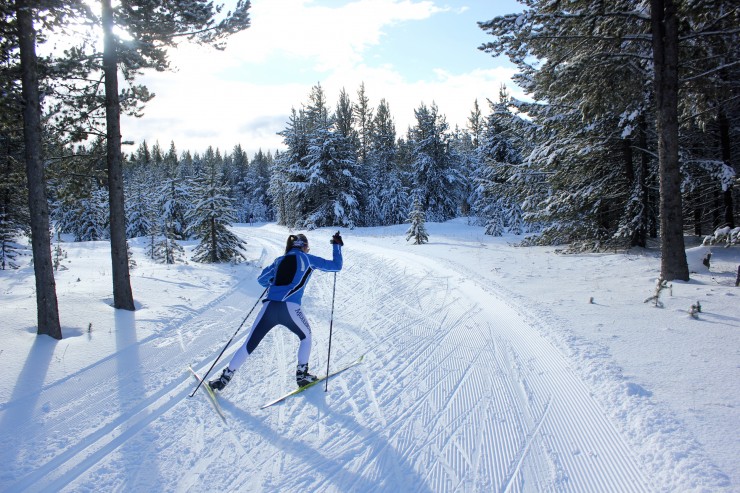
Then, on my last night at the festival, I attended Scott Johnston’s lecture: Capacity Training vs. Utilization Training; making an informed decision. As I listened, my confidence in my training approach was shaken.
Johnston, coach of the Methow Olympic Development Program, climber and former U.S. Ski Team member, said that he has seen many athletes whose training habits result in a phenomena called Aerobic Deficiency Syndrome (ADS). With ADS, athletes are forced to rely on inefficient high-intensity anaerobic energy pathways for even slow paced workouts.
In the lecture, Johnson looked out at the conference room full of fit, dedicated skiers and said he guessed that many, and possibly most of the attendees fit into this category.
“The better developed the aerobic base, the faster you can move for extended periods.” — Scott Johnston, Methow Olympic Development Program head coach
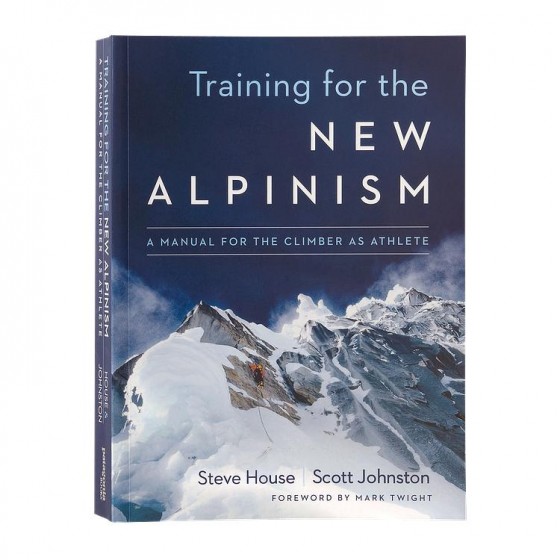
The symptoms of improperly training our aerobic base include not being able to ski without breathing hard, and prematurely tapping into our high-powered, but short-lived anaerobic energy reserves.Johnston points out that “long slow distance” aerobic training is better described as “long easy distance” training. As our aerobic base develops, we should be able to ski faster and faster on our long distance days while not losing the feeling of “easy” effort.
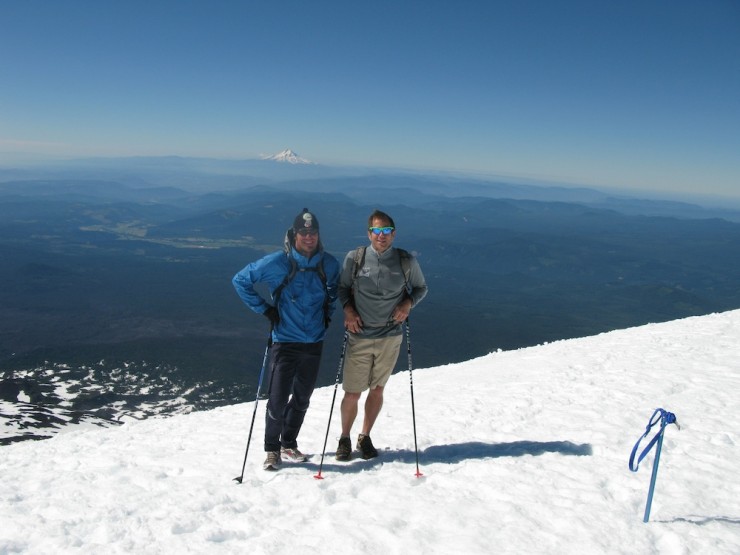
Another symptom of improper aerobic training was what I experienced at West Yellowstone. Since I trained too hard on my long easy days and warm-ups, I was simply too tired to effectively train during my harder Zone 3, 4 and 5 workouts. My exhaustion at the end of the week should have been a red flag my training was unsustainable, given my inadequately developed aerobic energy system.
In his lecture and in his book, Johnston provides a prescription and practical methods to avoid Aerobic Deficiency Syndrome. If you are unable to get a laboratory test to find your aerobic threshold heart rate, Johnston recommends starting to exercise slowly while breathing through your nose only.
“As you increase intensity/speed, note the point at which this nose breathing becomes noisy and labored,” he notes. This is the upper limit of Zone 1 (your aerobic threshold).
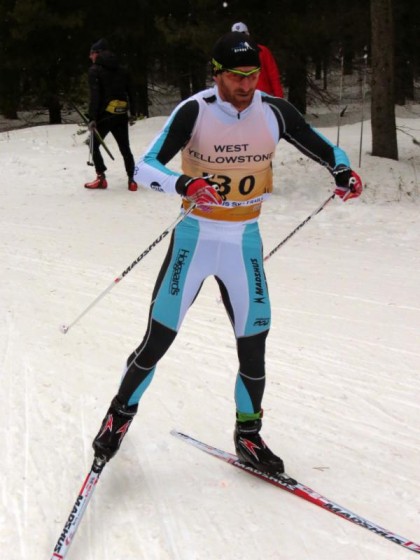
In his lecture, Johnston described coaching 2014 U.S. Olympian Brian Gregg and prescribing months of long distance aerobic base training at an effort where Gregg would breathe only through his nose. At first, Gregg found it very challenging to stay at this low intensity, and joked that he felt like training with “a bag over his head” because he was embarrassed that he was running so slowly.
With time, Gregg’s aerobic capacity increased to the point where he could easily click off mile after mile at a faster pace while maintaining Johnston’s nose-breathing limit. Johnston credits Gregg’s improved aerobic capacity as setting the stage for Gregg’s eventual selection to the 2014 U.S. Olympic team.
My experience with the nose-breathing method mirrors Johnston’s description in the book: “For some of you this (Zone 1) will be the hardest zone to train in. You may find that you can barely jog or can only hike uphill very slowly … before you must begin mouth breathing … and your heart-rate climbs … right through Zone 2 and into Zone 3.”
In my experiment with the CXC Academy training plan, I realize that I should have paid more attention to the information on training zones. While the information is provided in the plan, I skimmed over it. It took me hearing Johnson’s lecture and reading his book to jar me into recognizing my two major (but common) training mistakes. Johnson summarized these mistakes in an Outside Online interview:
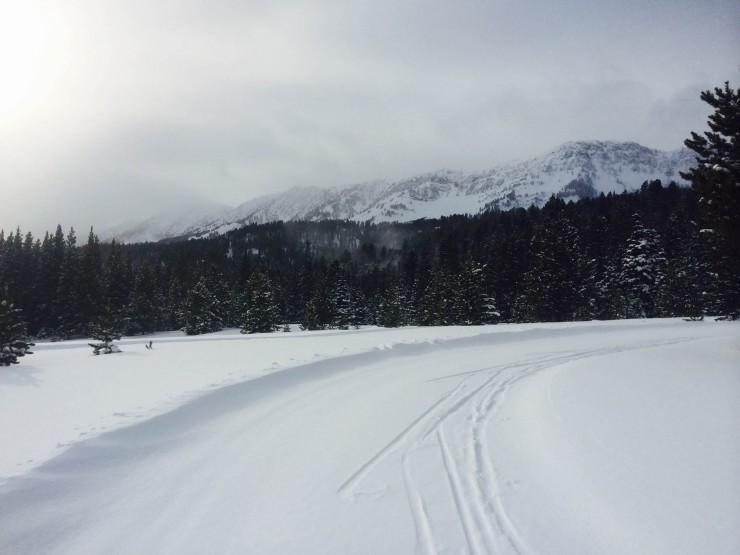
“Most people, regardless of sport, train basic aerobic endurance too hard or fast. This happens for two primary reasons. The first is that this intensity level ‘feels like training’ because it feels moderately hard. Secondly, many people are time-limited in their training and imagine that they can make up for the duration of training by increasing the intensity.”
So now, armed with good information, I’m back on track with my training plan. I credit the CXC Academy training plan for a steep change improvements in my ski specific strength and ski technique.
Now, I’m looking forward to improving my aerobic capacity. On my CXC Academy prescribed Zone 1 over-distance days at Montana’s Bohart Ranch and Seeley Lake trails, I’ll be skiing easy, breathing through my nose, and avoiding the temptation to put a bag over my head!
Mark Vosburgh
FasterSkier’s Para-Nordic contributor, Mark Vosburgh lives in Missoula, Mont., where he works as a Wildfire Scientist for the US Forest Service. In addition to being a chemical engineer, Mark is a cross-country and backcountry skier, bluegrass musician, and biker. He’s also a freelance writer for numerous publications including for 48 Degrees North and MakeitMissoula.com.




7 comments
teamepokeedsbyn
January 1, 2015 at 3:31 pm
Good article. One of the hardest things to learn is how to go easy. Highly trained athletes, such as myself, are usually guilty of “Masters Medium” most of the time.
T.Eastman
January 2, 2015 at 2:10 am
This is a “Masters Medium”…
… http://pixgood.com/seer-crystal-ball.html
offpistereese
January 2, 2015 at 5:56 pm
This method of slogging around works great if you have countless hours, like a pro, to train. It does not work well with under 10 hours a week, you just can’t generate enough training stress in that amount of time at that intensity.
zachhandler
January 2, 2015 at 10:21 pm
I am with offpistreese on this. I think this advice makes sense if you are training 15 to 20 hours a week and are actually at risk of overtraining. The average adult with a full time job and family gets out 3 or 4 times in a week for about 5 hours or less. In those circumstances level one is a waste of precious training hours if your goal is improving race results. Additionally, most people find level 2 more fun than level one. If you have 5 hours a week to train and want to build fitness then focus on level 3 and 4 intervals. If you don’t care about race fitness then do whatever you enjoy. For most people that means level 2 or “master medium” or whatever. Basically, people that like exercise like to go hard enough that it feels like exercise.
Also, as an aside, this whole level one through five thing is an artificial concept invented by nordic skiers and does not reflect physiologic reality. It is a convenient way to describe effort to be sure, but it is not”truth”. Most endurance sports do not use “levels”. Those that do often use a different number of levels. South African marathon kayakers think that there are 6 levels to human exertion for example.
That’s my 2 cents.
Big Joe
January 3, 2015 at 8:43 am
Good discussion — there are very effective ways of quantifying daily training stress. See Firstbeat.com I agree with Zach – these so-called zones are artificial and do not translate as cleanly as most skiers assume. EPOC is a far more effective way of measuring the stress level of any given workout.
teamepokeedsbyn
January 3, 2015 at 1:56 pm
Easy, hard and sprint “zone” works for me – hit hard at 9min/mile on the treadmill yesterday, with a hangover, so should be in tip top shape by next month.That firstbeat thing looks pretty cool. Still say hardest thing to learn for those serious a our racing is how to go easy though, basically gotta walk up hills on skis. I hope the USST girls and guys do well this week.
hankmoody
January 3, 2015 at 9:47 pm
Mr. E2 may i suggest a bump of snow or at least some nicoret to improve your treadmill performance — or at least some relay socks. i think that could get you to 8:45. no PED testing for you.